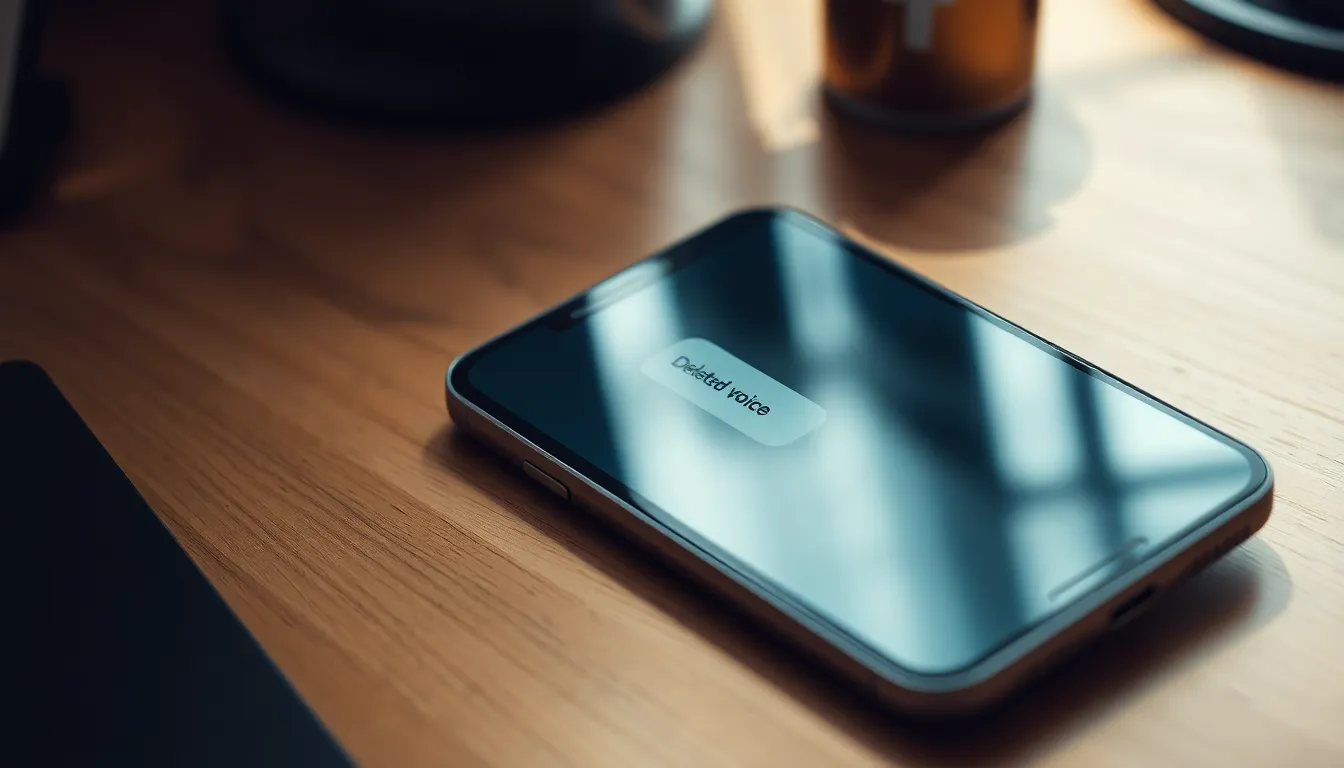Table of Contents
ToggleEver accidentally deleted a voice message and felt like you just lost a piece of your sanity? You’re not alone. Those little audio gems often hold precious information or heartfelt sentiments, and losing them can feel like misplacing your favorite pair of socks—frustrating and a little dramatic.
Understanding Voice Messages on iPhone
Voice messages on iPhone serve as convenient audio notes for communication. Users often send these messages through apps like iMessage and WhatsApp. They offer a more personal touch compared to text. Retrieving these messages can feel daunting if deleted unintentionally.
Voice messages typically remain accessible as long as the device retains them. Messaging platforms often store them temporarily, allowing users to listen again. Some platforms automatically delete old messages after a specific period, like 30 days. Users may encounter frustration if these messages vanish, particularly when they hold sentimental value.
To recover a deleted voice message, users first check the relevant app. The importance of searching the app’s trash or archived messages cannot be overstated. In many cases, deleted messages might actually stay in a deleted messages folder for a limited time.
Utilizing recovery software serves as another potential solution. Several applications specialize in retrieving lost data from iPhones. They target various files, including voice messages, enhancing recovery chances.
Understanding iCloud backup benefits users. Regular backups contain voice messages and other data, enabling users to restore their devices to a previous state. Users can easily verify their backup settings under settings.
Ultimately, voice messages carry more than just words. They preserve memories and emotions, making recovery efforts worthwhile. Exploring available features and methods increases the likelihood of recovering lost recordings.
Common Scenarios for Voice Message Loss

Voice messages can vanish due to various reasons. Understanding these circumstances helps users address issues more effectively.
Accidental Deletion
Accidental deletion commonly happens when users mistakenly tap on the delete option, resulting in lost voice messages. Users might delete these audio recordings while trying to manage storage or clear unwanted messages. Additionally, confusion during app navigation often leads to unintentional deletion. Regularly backing up messages can mitigate this risk. Users can enable iCloud backups or save important messages to other devices. Both methods provide an extra layer of security against such mishaps.
Software Updates and Glitches
Software updates occasionally introduce glitches that can affect message visibility. Users may find voice messages missing after an update due to compatibility issues between apps and the new operating system. Frequent crashes or unexpected app behavior often accompany these scenarios. Users should ensure that all applications remain up to date to minimize these concerns. If glitches persist, reinstalling the affected app may restore visibility to lost messages. Addressing these concerns promptly enhances overall user experience, making voice messaging a reliable communication tool.
Methods to Recover Voice Messages
Users can take several approaches to recover deleted voice messages on an iPhone. By understanding the available methods, retrieval can become a more straightforward process.
Checking the Recently Deleted Folder
Accessing the Recently Deleted folder in the Messages app offers a quick way to find deleted voice messages. Users can navigate to this folder by opening Messages, tapping on the conversation, and checking for an option to retrieve messages. Messages typically remain in this folder for 30 days before deletion becomes permanent. An immediate check can reveal recoverable recordings without much hassle.
Using iCloud Backup
Restoring voice messages from an iCloud backup is effective if users regularly back up their device. To initiate this process, users can go to Settings, tap on their name, and select iCloud. Here, they should find an option to manage backups. By choosing a backup that predates the message deletion, users can restore their voice messages. Confirming the contents of the backup ensures that the messages desired are included.
Utilizing iTunes Backup
For those who use iTunes for backups, recovering voice messages can occur through this application. Users need to connect their iPhone to a computer, launch iTunes, and select their device. The option to restore from a backup will guide users through the steps necessary. It’s important to select a backup made before the voice messages were deleted, allowing users to retrieve important recordings effectively.
Third-Party Recovery Tools
Various third-party recovery tools exist for retrieving deleted voice messages on iPhones. Many users turn to specialized recovery software when built-in options fail. Such tools typically scan the device and extract deleted files effectively.
Popular software includes Dr.Fone and EaseUS MobiSaver. Both applications offer user-friendly interfaces and quick recovery processes. Dr.Fone claims a 98% success rate in retrieving lost files, including voice messages. EaseUS MobiSaver also provides a free version with limited features, allowing users to test its capabilities before purchase.
Recovery tools require installation on a computer. Once installed, users connect their iPhones via USB for the scanning process. Most software will prompt users to select file types; choosing audio files increases chances of success for voice messages.
Some tools offer advanced recovery modes, enhancing data retrieval in complex cases. For instance, users can enable deep scanning for better results when standard modes don’t work. Additionally, these programs often allow previewing files before recovery, ensuring users retrieve the intended messages.
Data security remains a top concern. Reputable recovery tools prioritize user privacy and minimize data risks. Reading reviews and verifying the software’s credibility can help ensure safe usage.
Third-party solutions can restore precious moments captured in voice messages. Exploring all available recovery options, including these tools, is essential for users seeking full retrieval capabilities.
Tips for Preventive Measures
Backing up voice messages regularly enhances chances of retention. Utilize iCloud or iTunes for automated backups to ensure all audio recordings stay safe. Configuring your iPhone to back up frequently reduces the risk of loss.
Storing voice messages in a dedicated app helps maintain organization. Users should consider using note-taking apps or cloud storage services that allow easier access and management of audio files.
Updating software keeps your device functioning optimally. Regularly check for iOS updates to resolve potential issues that may lead to accidental deletions. Keeping apps updated also mitigates glitches that might affect voice message visibility.
Adopting a habit of reviewing messages periodically aids in preventing accidental deletion. Users can archive important recordings instead of outright deleting them, minimizing the likelihood of permanent loss.
Educating oneself on app functionalities fosters better management of voice messages. Knowing how the Recently Deleted folder works gives users insight into recovery options in case of accidental deletion.
Being mindful while navigating apps can prevent unintentional deletions. Users often delete messages while cleaning up storage; taking a moment to verify actions before deleting helps protect valuable recordings.
Exploring third-party backup solutions offers additional layers of security. Some apps specifically designed for message management provide advanced features for organizing and backing up voice messages effectively.
Recovering lost voice messages on an iPhone can be a straightforward process if users know where to look and what steps to take. By utilizing built-in features like the Recently Deleted folder and exploring iCloud or iTunes backups, many can successfully retrieve their precious audio notes.
For those facing challenges with built-in options, third-party recovery tools offer a viable alternative. Ensuring regular backups and staying updated with software can help prevent future losses. Ultimately, taking proactive measures and knowing the recovery options available can make all the difference in preserving cherished memories captured in voice messages.





